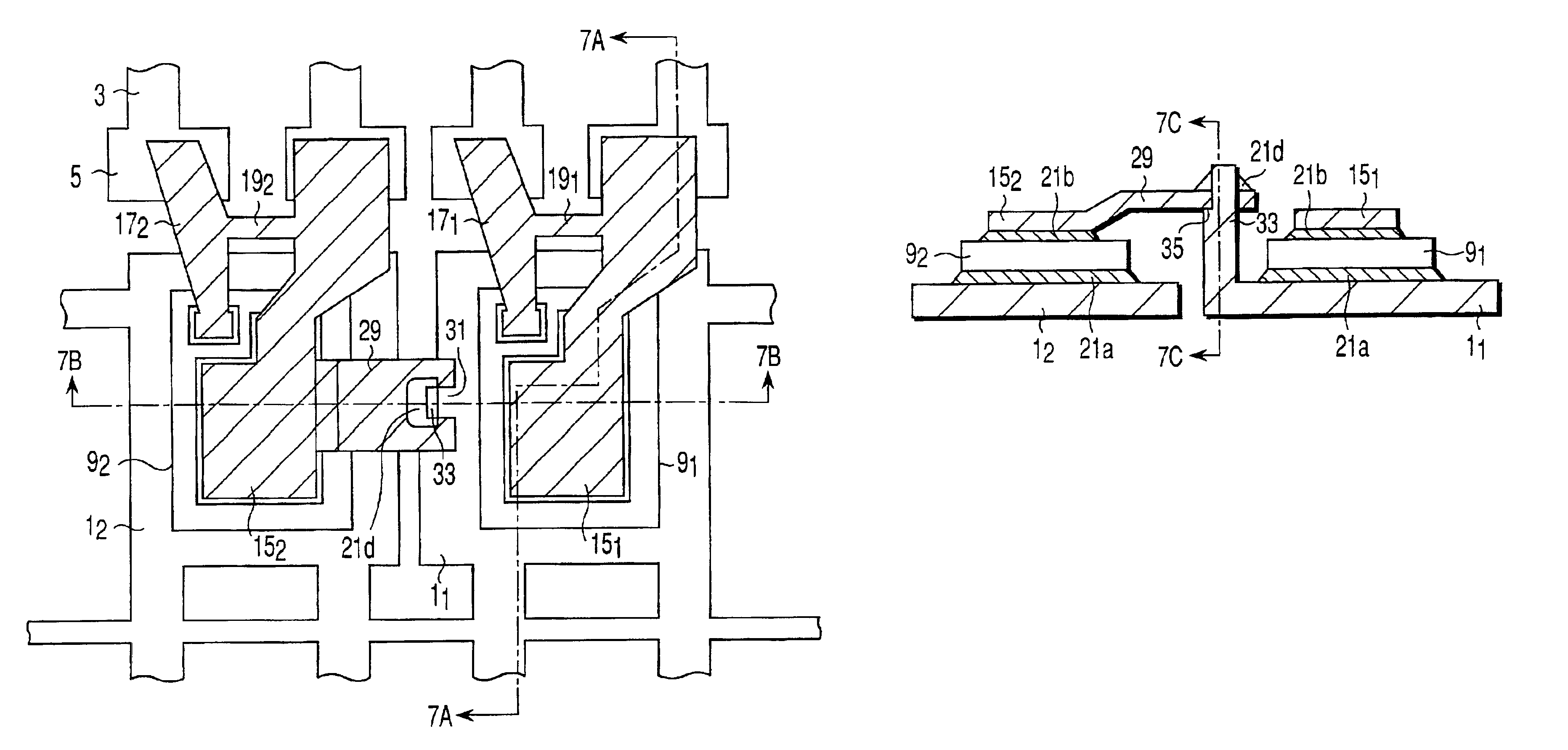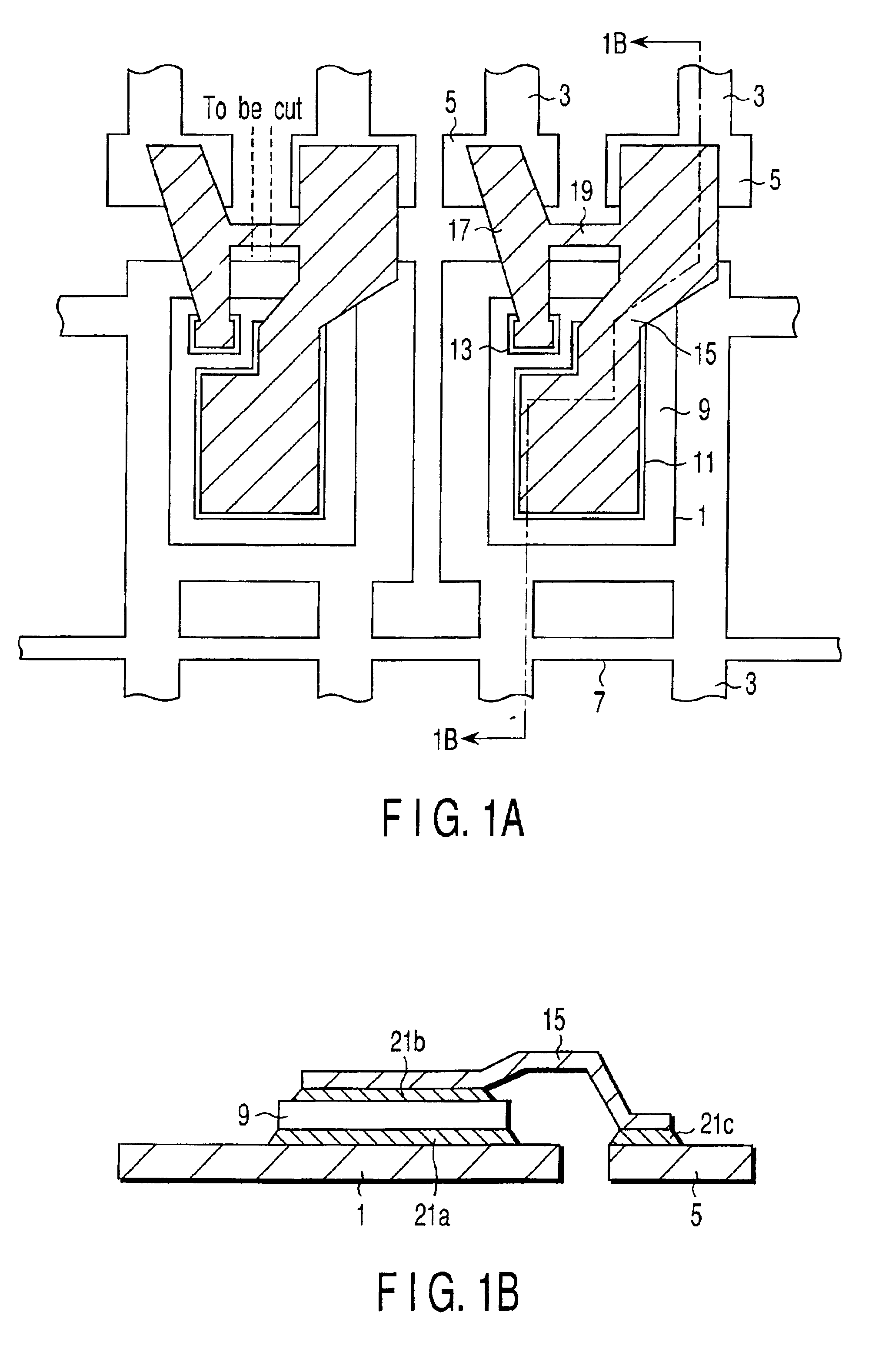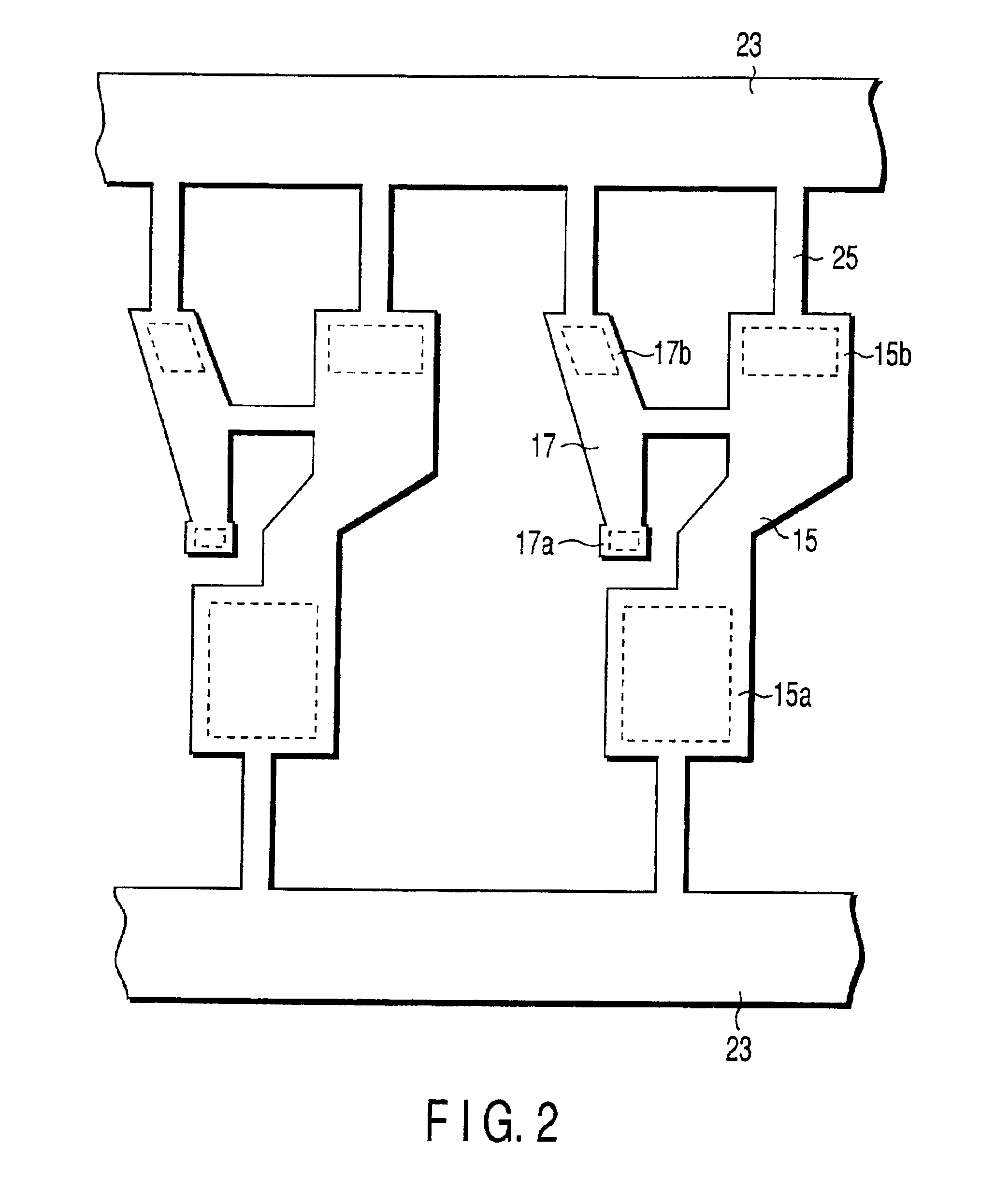Semiconductor device manufacturing method and semiconductor device manufactured thereby
a semiconductor device and manufacturing method technology, applied in semiconductor devices, semiconductor/solid-state device details, electrical devices, etc., can solve the problems of increased manufacturing and manufacturing facilities, performance loss, and inability to apply the soldering of internal leads, and achieve the effect of high reliability and ease of working
- Summary
- Abstract
- Description
- Claims
- Application Information
AI Technical Summary
Benefits of technology
Problems solved by technology
Method used
Image
Examples
first embodiment
[0028]A semiconductor device manufacturing method according to the present invention will be described with reference to FIGS. 1A and 1B. FIG. 1A is a plan view illustrating the configuration in which a semiconductor chip is mounted on a lead frame and electrodes on the top of the semiconductor chip are electrically connected to external leads of the lead frame through inner leads, and FIG. 1B is a sectional view taken along line 1B—1B of FIG. 1A.
[0029]In FIGS. 1A and 1B, reference numeral 1 denotes a die pad in the lead frame, 3 denotes an external lead of the lead frame, 5 denotes an inner lead connecting pad formed integrally with the external lead 3, and 7 denotes a tie bar adapted to form a well-known plastic seal lead frame, which is hereinafter referred to as the external lead frame for distinction from an internal lead frame to be described later.
[0030]To the die pad 1 of the external lead frame is attached a semiconductor chip 9 by a bonding material 21a which may be solder...
second embodiment
[0043][Second Embodiment]
[0044]A second embodiment of the present invention is basically the same as the first embodiment except for the shape of the die pads.
[0045]FIG. 3 is a plan view illustrating the inner connections in a semiconductor device according to the second embodiment of the present invention. Like reference numerals are used to denote corresponding parts to those in FIG. 1A and descriptions thereof are omitted. The same is true of still other embodiments.
[0046]The second embodiment is characterized in that, as shown in FIG. 3, the die pad 1a is formed with a notch 26 in its portion close to the tie bar 19 of the inner lead frame. The notch allows easy cutting of the tie bar.
third embodiment
[0047][Third Embodiment]
[0048]FIG. 4A is a plan view of an inner lead according to a third embodiment of the present invention and FIG. 4B is an enlarged section view of the tie bar taken along line 4B—4B of FIG. 4A. In the second embodiment, as shown in FIG. 4B, the cutting portion 27 of the tie bar 19a is set smaller in thickness than the inner lead, thereby allowing easy cutting of the tie bar. For example, the thickness of the inner lead is set to 0.3 mm and the thickness of the cutting portion is set to 0.15 mm.
PUM
 Login to View More
Login to View More Abstract
Description
Claims
Application Information
 Login to View More
Login to View More - R&D
- Intellectual Property
- Life Sciences
- Materials
- Tech Scout
- Unparalleled Data Quality
- Higher Quality Content
- 60% Fewer Hallucinations
Browse by: Latest US Patents, China's latest patents, Technical Efficacy Thesaurus, Application Domain, Technology Topic, Popular Technical Reports.
© 2025 PatSnap. All rights reserved.Legal|Privacy policy|Modern Slavery Act Transparency Statement|Sitemap|About US| Contact US: help@patsnap.com



